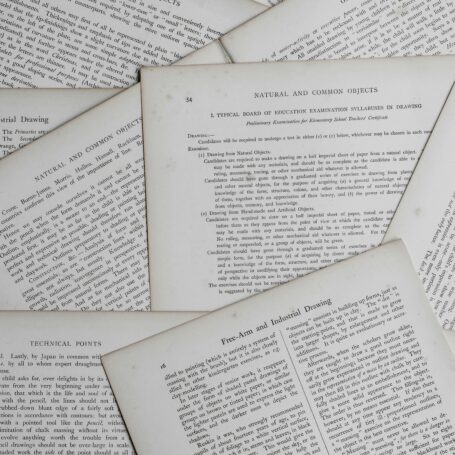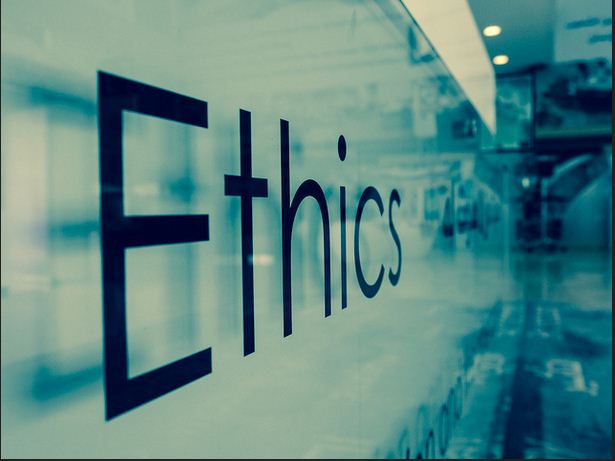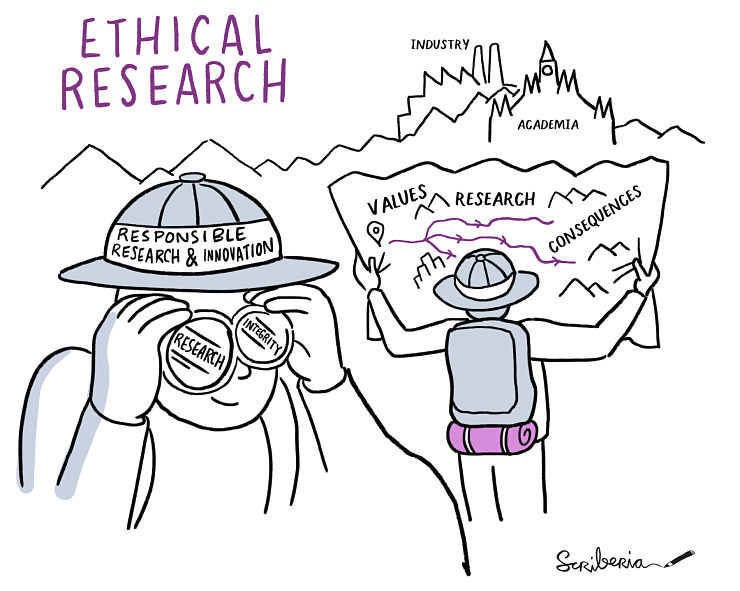A Primer on Plagiarism and Other Publishing Sins
Academic publication is the cornerstone of scientific progress. Authorship of quality scientific literature is highly regarded among physicians and academics generally. However, powerful intellectual, financial and political interests may be involved in academic publication, which potentially can distort scientific literature. This can result in plagiarism, data fabrication and falsification, redundant publication and illegitimate authorship.
Plagiarism
The term plagiarism denotes intentional or unintentional borrowing of ideas or words of others without giving appropriate credit. As per the World Association of Medical Editors, plagiarism occurs when six consecutive words are copied, or 7 to 11 words are overlapping in a set of 30 letters. Although plagiarism is considered as a violation of the contemporary codes of publication ethics, it is rampant and a growing menace in the present academic world of literature. Plagiarism can be of several types. Plagiarism of ideas may occur when an author presents someone else’s ideas, thoughts or inventions as his own without giving appropriate credit. This is very difficult to detect as the scripts from the original paper are not directly reproduced. Plagiarism of text also known as word-for-word plagiarism is the complete or partial copying of words without credit to its author. With the advancement of technology and the digitalisation of medical literature, this is increasingly common. The third type of plagiarism, mosaic plagiarism, is perhaps more common: authors copy ideas and sentences from an original source and admix it with a few words of their own here and there. This practice is unethical when the original author is not acknowledged and the reference is not cited appropriately. Self-plagiarism is another form of plagiarism which refers to the reuse of author’s own previous work without appropriate quotation and permission to reproduce text from the copyright holder. Avoiding simultaneous submission of the same manuscript to two or more journals and waiting to hear from the editor of one journal before submitting the manuscript to another is best practice. Generally, an author has to confirm at the time of submission that the manuscript has been submitted solely to that journal and is not published, or in press.

Data fabrication and falsification
Data fabrication and falsification are serious forms of scientific misconduct. Data fabrication involves invention of data or cases while data falsification is the intentional distortion of data or the results. An infamous example of data fabrication is the cloning scandal involving the Korean scientist Woo-Suk Hwang. Dr. Hwang published two successive papers in Science in 2004 and 2005 about the development of pluripotent stem cells from human blastocyst. As a result of his papers, Dr. Hwang quickly became an international celebrity. However, investigations revealed that both of his papers were based on fraudulent data. His papers were both retracted, and he was fired from his post as a professor at Seoul National University.
Data falsification is probably more common. Scientific results can be distorted to show a statistically significant result to meet the expected outcome of a study. A study can be selectively published only when it meets the researchers’ expectations. Fanneli’s meta-analysis revealed that about 2 percent of scientists admitted to having fabricated, falsified, or modified data or results at least once. The actual frequency of scientific misconduct could be higher than this. Clearly, scientific misconducts of this kind impact detrimentally on the scientific and the wider community.
Redundant publication
Redundant publication involves the publication of the same work more than once in the same or different languages without acknowledging the original source. Two papers need not be identical: there could be sharing or substantial overlapping of data and the presentation of similar findings. Redundant publication creates several problems in the scientific community. It can distort the scientific literature by showing the same scientific observation more than once, inflating its occurrence which could impact subsequent observations such as meta-analyses and reviews. It can violate copyright law. There is also waste of time and effort of journal editors and reviewers.
See also …
Publication Ethics and Biomedical Imperialism | Applying ethics to social science research can raise as many issues as it answers. A new set of guidelines on which Robert Dingwall consulted gives clarity in some cases like manipulation of images and duplicate publication but leaves some other controversies unsettled.
15+ Unobvious Consequences of Plagiarism in Academia
What Are The Consequences of Plagiarism?
A few years ago, as one of the founder editors of a forensic medicine-related journal based in South India, the first author came across a submission that was already published in another journal of the same specialty also based in India. A timely editorial review and discovery prevented the manuscript from being forwarded to external peer reviewers and the possibility of redundant publication thereafter. The author in this case had disguised the second manuscript with a different title. In another instance, a manuscript that had already been accepted after peer review was requested to be withdrawn by the authors. Although reluctant to begin with, the decision of the authors was respected by the Journal and within the next couple of months the same article appeared in press (Epub ahead of print) at a UK-based journal website with a few modifications probably influenced by the authors’ response to the reviewers’ comments. The authors from North India had submitted the article to both the journals of the same specialty, one based in India and the other in UK on the same date.
An analysis of Medline retractions by Wager and Williams revealed that 17 percent of the retractions were for redundant publication. Following publication, the redundant manuscript which overlaps with the first manuscript is retracted or withdrawn to correct the published record, and a retraction notice is published by the publisher or the editor. Some authors would argue that their article is not redundant but the editors’ view is different. (See here, here, here, here, here, here and here.) We consider the willful and deliberate practice of redundant publication by the same authors as an “academic perversion” that needs to be strongly criticised by the scientific community.
Authorship
An important area of scientific misconduct relates to authorship, which is generally conferred upon individuals who make significant intellectual contributions to a published study and who are responsible for the content of a study. (See here, here, here and here.) The International Committee of Medical Journal Editors states that any author of a scientific publication should meet all of the following criteria:
- Substantial contributions to the conception and design, acquisition of data, or analysis and interpretation of data.
- Drafting the article or revising it critically for important intellectual content.
- Final approval of the version to be published.
The Council of Scientific Editors describes a range of authorship misconducts that includes honorary or gift authorship and ghost authorship. The practice of offering authorship to individuals who have made no or an insignificant contribution to a manuscript is often referred to as honorary or gift authorship.34 This may be due to coercion from a senior colleague, or in an attempt to boost the chances of publication by including a renowned figure as a co-author. The observations of a survey of researchers in French clinical settings showed that 59 percent of the researchers had been a recipient of gift authorship. On the other hand, ghost authorship involves an undisclosed conflict of interest where a pharmaceutical industry employee or contractor co-authors a study but is not listed as an author in the publication. The French survey showed that 64 percent of the researchers were aware of ghost authorship.
Discussion
Science journal editors have a significant role in protecting the quality of scientific literature. Many journals have clear publication policies to ensure that publication misconducts are avoided. Most journals require the authors to declare that the work submitted is original and not being considered elsewhere for publication and has not been published before. Journals also use a variety of plagiarism detection tools to ensure the originality of a submitted manuscript. To avoid illegitimate authorship, journals should require authors to declare in some form that everyone listed meets the criteria. Many journals ask for a declaration of each author’s contribution to the research which makes misleading claims less likely. The more serious forms of misconduct (data fabrication and falsification) are usually suspected by the reviewers during the peer review process. Such events should be reported to the concerned authorities for necessary investigation.
Conclusion
In conclusion, publication misconduct is very common. It is the responsibility of journal editors, reviewers, readers and most importantly authors to make sure that this is kept to a bare minimum so that scientific literature is reliable and trustworthy. Continuing publication education is needed.






















































































I completely agree with Ana! Everyone is in danger of being his ideas stolen, especially scientists and people, who are working on the web (designers, freelance writers) . But sometimes plagiarism could be unwitting. Fortunately, everyone is able to check himself and avoid at least word-for-word plagiarism (as it was mentioned in the article) due to development of IT. Some are really helpful
“Plagiarism of ideas may occur when an author presents someone else’s ideas…”. An idea per se is not protected by a copyright and it can be proposed by more than a person (sometimes at the same time). Therefore, it is not plagiarism until the idea is published and someone different to the author uses it without cite to the original work.